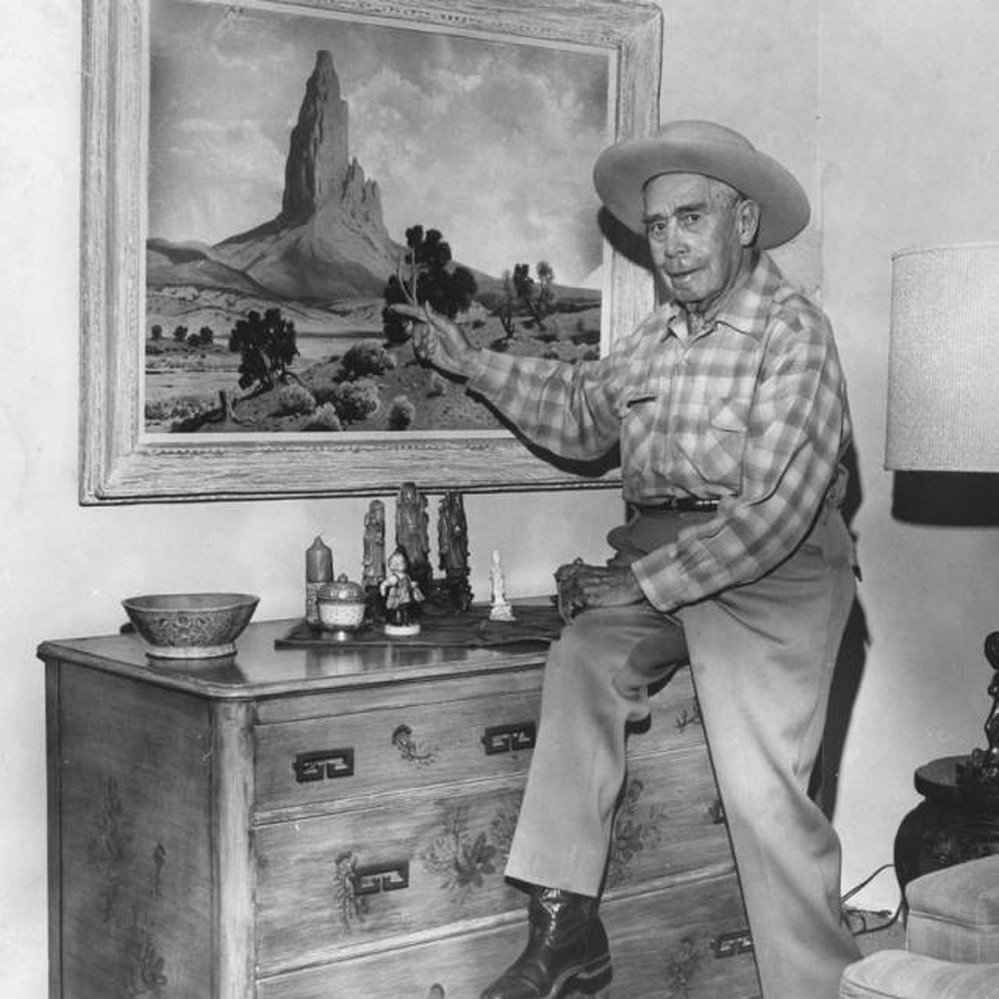The Weatherford Hotel has had its share of famous guests over its 120 plus years, but it’s doubtful it ever hosted anyone who was more of a character than artist Jimmy Swinnerton.
In 1951, Arizona Highways magazine wrote the following about the man:
“Jimmy Swinnerton, the hard-drinking consumptive who should have died fifty years ago, is today a hearty, husky, temperate man whose twinkling eyes and quick wit belie his age.” At the time of this article, Swinnerton was 76 years old and would make it another 22 years, dying just short of his 99th birthday.
Swinnerton is mainly known as the originator of the modern newspaper comic strip, creating Little Jimmy when he was just 17 years old in 1892. In addition to his cartoon illustrations, he became a celebrated landscape painter, and much of his work in both styles focuses on the terrain and people of Northern Arizona. And unlike many of the famous folks who stopped through the Weatherford over the years, Swinnerton’s connection to Flagstaff lasted for a lifetime.
James Guilford Swinnerton first came to Flagstaff in 1905, as he was sent by his boss and fellow Weatherford guest William Randolph Heart to get some rest and recover from years of alcohol abuse. He was 20 years old at the time.
Swinnerton semi-recovered and returned frequently, staying in the bridal suite of the Weatherford, as well as the Commercial Hotel and various private homes. In a biography of Swinnerton, there is a description of the Weatherford at the time as a rowdy, “bullet-scarred” place.
Swinnerton is also notable for helping to start the annual Flagstaff Pow Wow, and for attempting to make the town more welcoming toward Native Americans. Articles in the Coconino Sun, Arizona Highways, and much later, Platt Cline’s celebrated history of Flagstaff “Mountain Town,” recount that Navajos in particular generally avoided Flagstaff due to racism here and instead took their business to Winslow and Holbrook, and that Swinnerton tried to rectify this by organizing the first Flagstaff Pow Wow.
Please note that I’m a hotel manager– not an anthropologist, so I can’t accurately speak to the aspects of Swinnerton’s legacy that deal with Flagstaff’s, let alone America’s, treatment of Native Americans. His cutesy illustrations of Native children might look reductive to modern eyes, but from reading various accounts of the man, it’s my opinion that Swinnerton genuinely appreciated and respected Native Americans in a non-condescending way.
Although he visited Flagstaff less often after the 1920s, Swinnerton returned occasionally throughout his life, and the very last gallery exhibition of his work during his lifetime was at Flagstaff’s Art Barn in 1969.
Although Jimmy Swinnerton is not as well-known today as he probably should be, it’s apparent that his life was well lived, and that Flagstaff and the Weatherford Hotel are lucky to be parts of his interesting and very long story.


